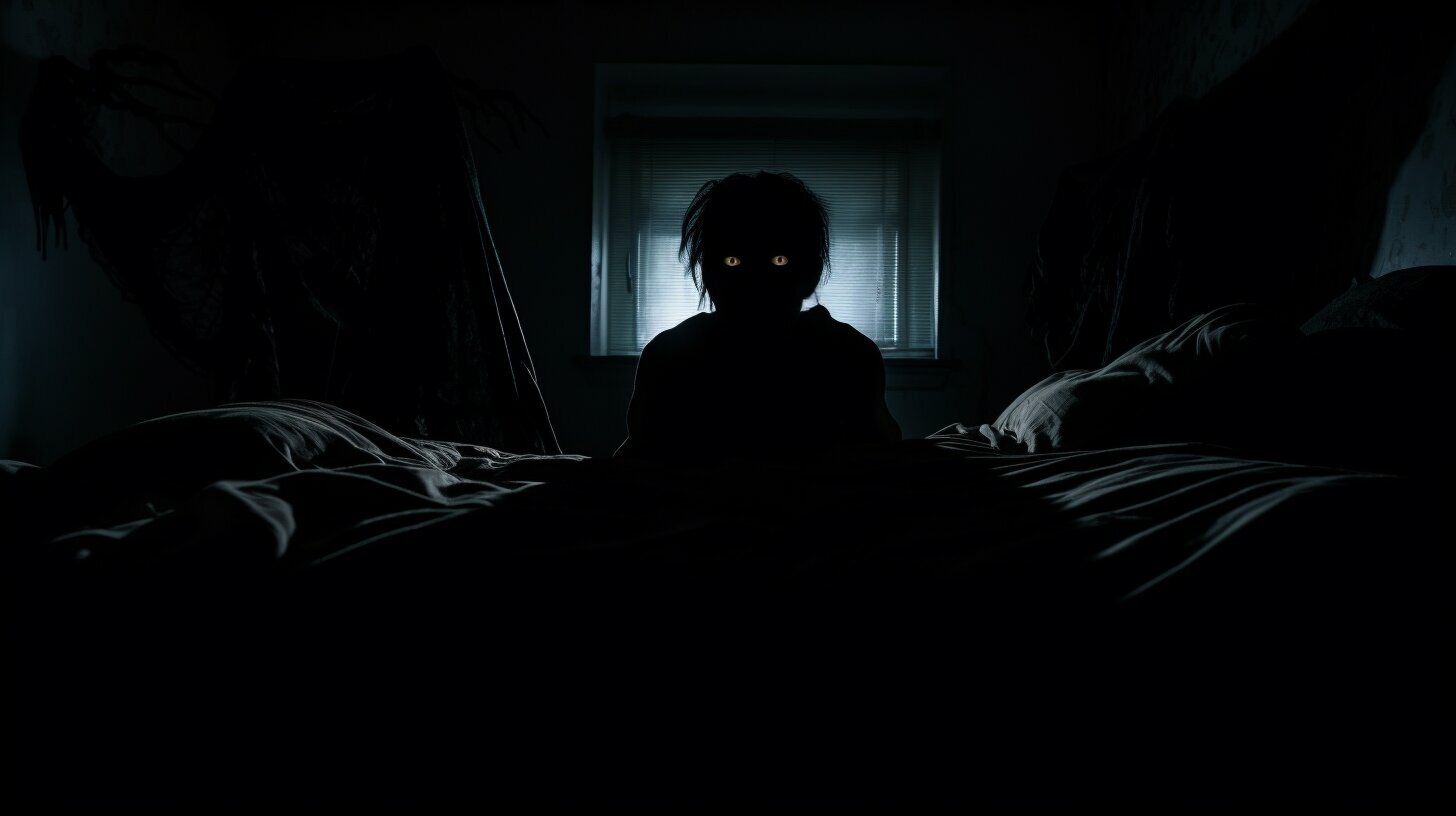Welcome to my latest article, where I’ll be exploring the fascinating world of lucid dreams and sleep paralysis. You may have heard the terms before, or perhaps you’ve experienced one or both of them yourself. But are lucid dreams and sleep paralysis the same thing? That’s what we’ll be investigating throughout this article.
First, let’s establish what exactly lucid dreams and sleep paralysis are. Lucid dreams are dreams in which the dreamer is aware they are dreaming and can sometimes control the dream’s content. Sleep paralysis, on the other hand, is a temporary inability to move or speak that can occur when waking up or falling asleep. Both phenomena occur during the sleep cycle and can be disorienting or even frightening for those who experience them.
Join me as we delve deeper into the differences and similarities between these two intriguing sleep phenomena.
Key Takeaways:
- Lucid dreams and sleep paralysis are both sleep phenomena.
- Lucid dreams involve awareness of dreaming and some control over the dream’s content.
- Sleep paralysis is a temporary inability to move or speak that can occur during the sleep cycle.
Understanding Lucid Dreams and Sleep Paralysis
Before we explore whether lucid dreams and sleep paralysis are the same, let’s establish what each experience entails.
Lucid dreams are dreams in which the dreamer is aware that they are dreaming. This awareness can range from a vague feeling of lucidity to a fully conscious state within the dream. In lucid dreams, the dreamer may be able to control the dream narrative, manipulate the environment, or even interact with dream characters.
Sleep paralysis is a state in which the body is temporarily unable to move or speak while falling asleep or waking up. During this state, the individual may experience vivid hallucinations, feelings of pressure or suffocation, and a sense of terror or dread. Sleep paralysis typically lasts only a few seconds or minutes, but can be a distressing experience.
It’s important to note that while both lucid dreams and sleep paralysis occur during sleep, they are distinct experiences with different features and sensations. In the following sections, we’ll explore the differences and similarities between these two fascinating phenomena.

Debunking Myths about Lucid Dreams and Sleep Paralysis
As with any topic that attracts public interest, lucid dreams and sleep paralysis have gained their fair share of myths and misconceptions. In this section, I will explore and debunk some of the most common ones.
- Myth: Lucid dreams only occur to people who have trained themselves to have them.
- Myth: Sleep paralysis is a supernatural or demonic experience.
- Myth: Lucid dreams can be dangerous and lead to mental instability.
- Myth: Sleep paralysis is always accompanied by hallucinations.
- Myth: Lucid dreams are only enjoyable and never turn into nightmares.
Fact: While some people use techniques such as reality checks or dream journaling to induce lucid dreams, anyone can experience them spontaneously. In fact, most people have had at least one lucid dream in their lifetime without even trying to have one.
Fact: Although it can be a terrifying experience, sleep paralysis is a natural phenomenon that occurs when the body and mind are out of sync during the transition between sleep and wakefulness. It has no connection to supernatural forces.
Fact: There is no evidence to suggest that lucid dreaming leads to mental instability. In fact, some studies have shown that people who regularly experience lucid dreams have higher levels of self-awareness and better problem-solving skills.
Fact: While sleep paralysis can be accompanied by vivid hallucinations, not everyone experiences them. Some people only feel the physical sensations of being unable to move or speak.
Fact: Just like regular dreams, lucid dreams can be positive or negative. While some people use lucid dreaming to control and mitigate nightmares, others may accidentally turn a pleasant dream into a nightmare by attempting to manipulate the dream environment.
By dispelling these myths, we can gain a more accurate and nuanced understanding of lucid dreams and sleep paralysis.
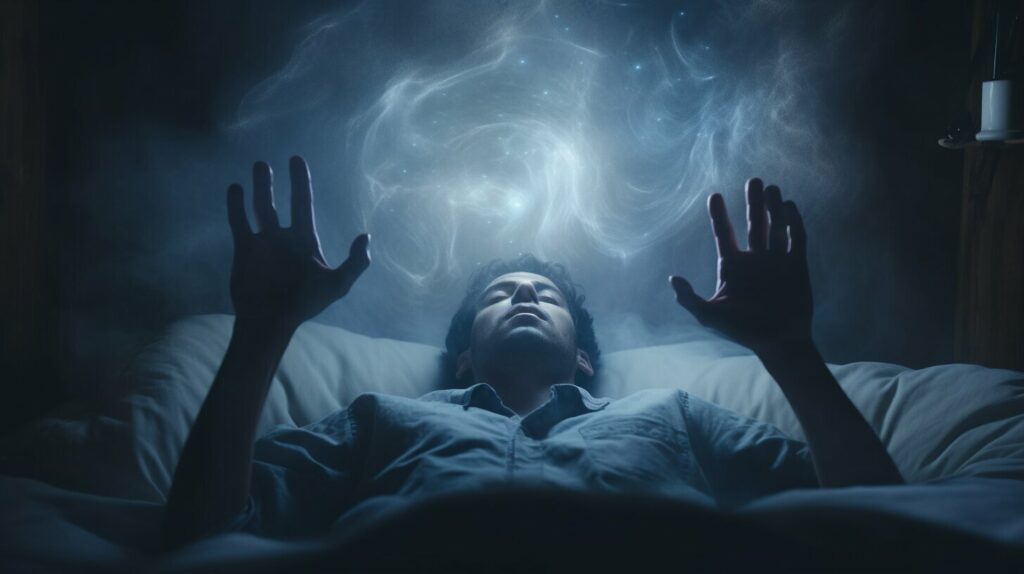
Exploring the Relationship between Lucid Dreams and Sleep Paralysis
While lucid dreams and sleep paralysis are distinct sleep phenomena, there may be a relationship between the two. Some researchers believe that individuals who experience one phenomenon may be more likely to experience the other.
In fact, a study published in the journal Sleep found that individuals who experienced frequent sleep paralysis were significantly more likely to have lucid dreams. The study suggests that there may be a common underlying factor that predisposes individuals to both phenomena.
Additionally, some individuals report experiencing a state of sleep paralysis before entering a lucid dream state. This experience is known as hypnagogic or hypnopompic hallucinations and may involve vivid dream-like imagery or sensations of being unable to move.
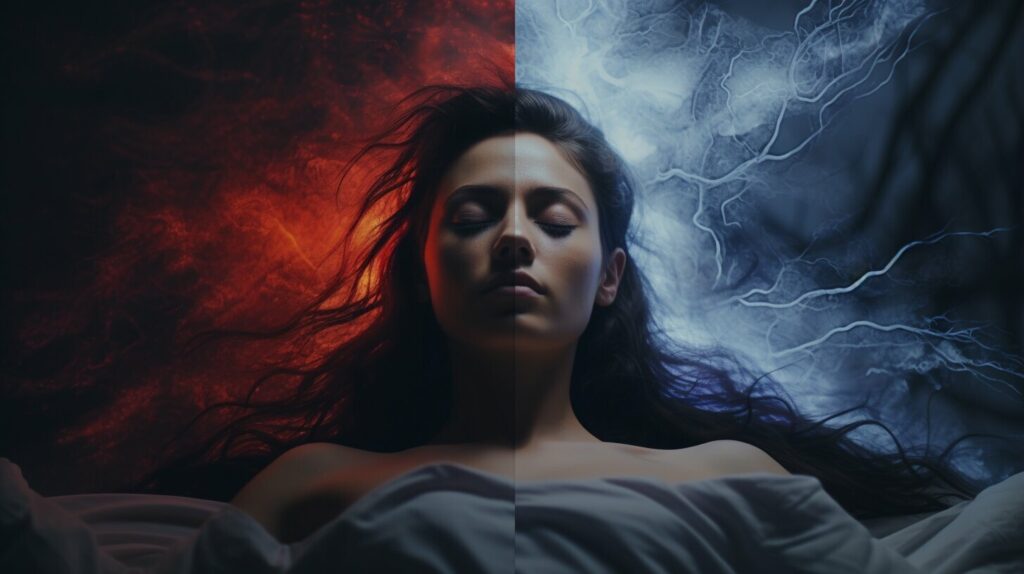
Despite these potential links, it is important to note that not all individuals who experience one phenomenon will necessarily experience the other. Likewise, the frequency and intensity of each phenomenon can vary greatly between individuals.
Conclusion:
In summary, while there may be a relationship between lucid dreams and sleep paralysis, this relationship is not yet fully understood. Further research is needed to explore the potential connections between these two phenomena.
The Differences between Lucid Dreams and Sleep Paralysis
Although lucid dreams and sleep paralysis are often associated with one another, they are distinct phenomena with different characteristics and experiences.
First and foremost, lucid dreams occur when an individual is aware that they are dreaming and can exert some level of control over the dream. In contrast, sleep paralysis is characterized by an inability to move or speak while transitioning between sleep and wakefulness. This can be a frightening experience, as individuals may feel as though they are awake but unable to move.
Lucid dreams are often described as vivid and immersive experiences that can be positive or negative in nature. They may involve fantastical elements or be rooted in realistic settings. Sleep paralysis, on the other hand, is associated with feelings of fear, dread, and vulnerability, particularly when accompanied by hallucinations or the sensation of a presence in the room.
While lucid dreams can be induced through various techniques such as reality checks or meditation, sleep paralysis is an involuntary experience that can be triggered by factors such as stress, sleep deprivation, or irregular sleep patterns.

Overall, while both lucid dreams and sleep paralysis involve altered states of consciousness during sleep, they are fundamentally different experiences with unique characteristics and triggers.
The Similarities between Lucid Dreams and Sleep Paralysis
Although lucid dreams and sleep paralysis are distinct phenomena, they share some similarities in terms of experiences and sensations. For instance, both can involve a feeling of being awake while the body is still asleep, and both can lead to vivid and intense sensory experiences. Additionally, both phenomena can occur during the REM stage of sleep.
In some cases, individuals who experience sleep paralysis may also have lucid dreams. This is because sleep paralysis can sometimes be a gateway to lucid dreaming. If an individual is aware that they are experiencing sleep paralysis, they may be able to use that awareness to enter a lucid dream state.
Moreover, both lucid dreaming and sleep paralysis can be triggered by external factors, such as stress, sleep deprivation, and certain medications. They may also be influenced by internal factors, such as mental health conditions or sleep disorders.
Overall, while there are certainly differences between lucid dreams and sleep paralysis, it is important to recognize the ways in which they are similar. Understanding the shared characteristics of these phenomena can help us better understand them as a whole and lead to more effective management strategies.
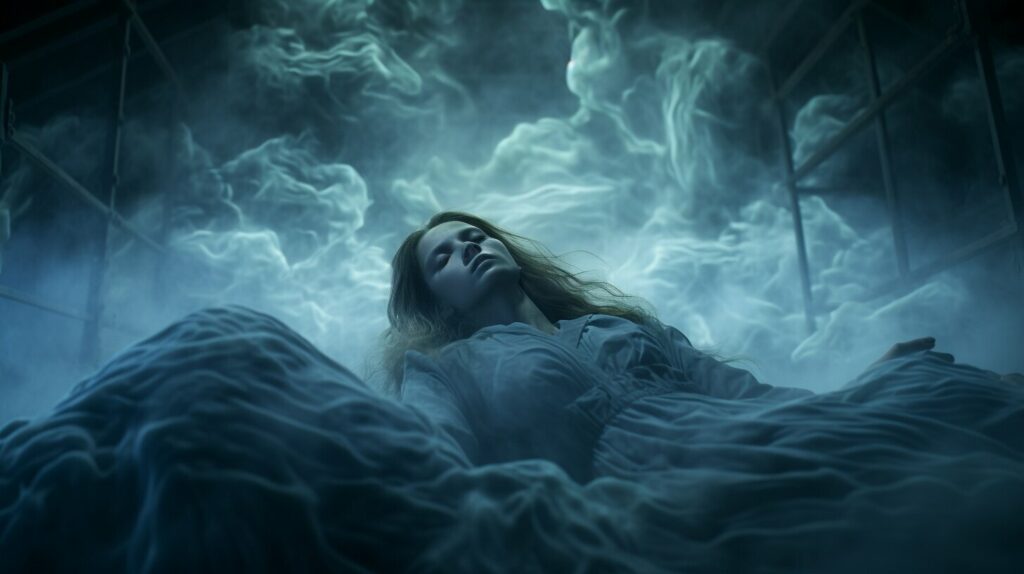
Causes and Triggers of Lucid Dreams and Sleep Paralysis
Lucid dreams and sleep paralysis can be caused by a variety of factors, ranging from biological to psychological. In terms of biological causes, studies have suggested that an increase in acetylcholine and dopamine levels in the brain can lead to an increased likelihood of experiencing lucid dreams. Additionally, irregular sleep patterns and sleep deprivation can trigger sleep paralysis.
Psychological factors can also play a role in these phenomena. Stress, anxiety, and trauma have all been linked to sleep disturbances, including lucid dreams and sleep paralysis. Individuals who experience these issues may find that their dreams become more vivid and intense, or they may wake up unable to move during an episode of sleep paralysis.
External factors can also influence the occurrence of lucid dreams and sleep paralysis. For example, changes in medications or drug use can affect brain chemistry and trigger unusual sleep experiences. Additionally, sleep disturbances caused by environmental factors such as noise or light can disrupt sleep cycles and increase the likelihood of these phenomena.
It is important to note that each individual’s experiences may vary, and the causes and triggers of lucid dreams and sleep paralysis can be unique to each person.

“Lucid dreams and sleep paralysis can be caused by a variety of factors, ranging from biological to psychological.”
Managing Lucid Dreams and Sleep Paralysis
Lucid dreams and sleep paralysis can be overwhelming experiences, but there are ways to manage them effectively. Here are some strategies to help:
- Reality checks: Perform reality checks during the day to increase the chances of becoming lucid during a dream. Examples of reality checks include looking at your hands or checking the time, as these things can behave differently in dreams than in reality.
- Relaxation techniques: Practicing relaxation techniques such as meditation or deep breathing can reduce anxiety and help ease into sleep.
- Sleep hygiene: Maintaining a consistent sleep schedule, avoiding caffeine and alcohol before bed, and creating a sleep-conducive environment can help reduce the frequency of sleep paralysis episodes.
It is important to note that managing lucid dreams and sleep paralysis may require experimentation to determine what works best for you.

“Understanding and managing lucid dreams and sleep paralysis can provide some relief and control over these experiences.”
Additionally, seeking professional help from a therapist or sleep specialist may be beneficial for those experiencing frequent or distressing episodes of sleep paralysis or lucid dreaming.
Understanding and managing lucid dreams and sleep paralysis can provide some relief and control over these experiences. By incorporating these strategies, individuals can reduce the impact of these phenomena on their sleep and overall well-being.
Scientific Research on Lucid Dreams and Sleep Paralysis
Over the years, scientists have conducted extensive research on lucid dreams and sleep paralysis to understand their underlying mechanisms. The studies have revealed fascinating findings that shed light on these unique experiences.
Lucid Dreams
One study conducted by LaBerge (1980) found that lucid dreams occur during rapid eye movement (REM) sleep. REM sleep is characterized by brainwave activity similar to that of wakefulness and is associated with vivid dreaming. LaBerge found that lucid dreams are accompanied by increased activity in the prefrontal cortex, the area of the brain responsible for decision-making and self-awareness.
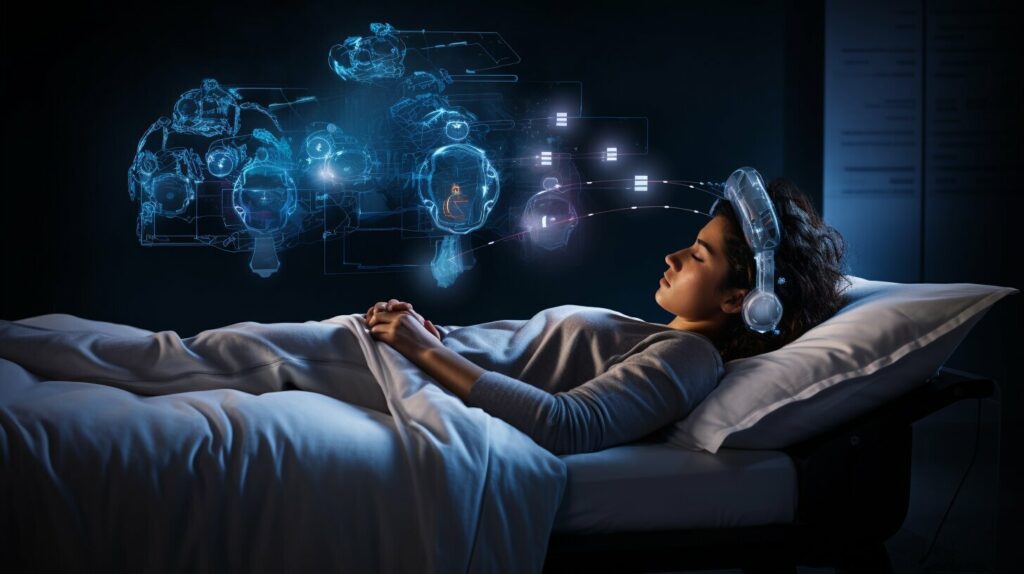
Another study by Voss et al. (2009) proposed that lucid dreams may be triggered by a combination of external stimuli and internal thought processes. The researchers found that participants who performed reality checks and had a higher level of reflective awareness during the day were more likely to experience lucid dreams at night.
Sleep Paralysis
Research on sleep paralysis has largely focused on its connection to other sleep disorders, particularly narcolepsy. Studies have shown that individuals with narcolepsy are more likely to experience sleep paralysis, and the two conditions may share a common underlying cause in the dysfunction of the neurotransmitter hypocretin.
Jalal and Hinton (2013) proposed a cognitive model for sleep paralysis, suggesting that it may be triggered by the misattribution of internal stimuli during sleep. The researchers found that individuals with sleep paralysis were more likely to have high levels of stress and anxiety, which may contribute to the occurrence of the condition.
Overall, the scientific research on lucid dreams and sleep paralysis has provided valuable insights into the nature of these phenomena. While much remains unknown, the studies have helped us understand the physiological and psychological factors that contribute to these unique experiences.
Conclusion
Throughout this article, I have sought to explore the question of whether lucid dreams and sleep paralysis are the same phenomenon or something different altogether. By providing definitions, debunking myths, discussing the relationship between the two, and highlighting their differences and similarities, I hope to have provided a comprehensive understanding of these intriguing sleep experiences.
While both lucid dreams and sleep paralysis occur during the REM stage of sleep, they are fundamentally different experiences. Lucid dreams are characterized by awareness and control over the dream environment, while sleep paralysis involves the inability to move or speak during waking periods.
Despite these differences, there are some similarities between the two phenomena, such as the occurrence of vivid hallucinations and sensations. Additionally, both can be caused by a range of factors, including stress and irregular sleep patterns, and may be managed by various techniques such as reality checks and maintaining a consistent sleep schedule.
Key Takeaways
To summarize, here are some key takeaways from this article:
- Lucid dreams and sleep paralysis are distinctly different experiences, despite both occurring during the REM stage of sleep.
- Debunked myths about these experiences can help to provide accurate understandings of them.
- While there are some similarities between the two, such as vivid hallucinations, there are also many differences, such as the ability to control the dream environment.
- Various factors, such as stress and irregular sleep patterns, can contribute to the occurrence of lucid dreams and sleep paralysis.
- There are a range of techniques that can be used to manage these phenomena, including reality checks and maintaining a consistent sleep schedule.
Overall, lucid dreams and sleep paralysis are fascinating and complex experiences that warrant further research. By understanding the differences and similarities between them, people can learn to manage and control their dreams and waking experiences more effectively.
FAQ
Q: Are lucid dreams and sleep paralysis the same?
A: No, lucid dreams and sleep paralysis are not the same. While both are sleep phenomena, they have distinct characteristics and experiences. Let’s explore their differences and similarities below.
Q: What are lucid dreams and sleep paralysis?
A: Lucid dreams are dreams in which the dreamer is aware that they are dreaming and can sometimes exert control over the dream content. Sleep paralysis, on the other hand, is a temporary inability to move or speak that occurs when falling asleep or waking up. It can be accompanied by hallucinations and a feeling of pressure on the chest.
Q: What myths are associated with lucid dreams and sleep paralysis?
A: There are several misconceptions surrounding lucid dreams and sleep paralysis. Some common myths include the belief that lucid dreams are dangerous or can cause harm, or that sleep paralysis is a supernatural or paranormal experience. In reality, both phenomena have scientific explanations and can be understood through research and knowledge.
Q: Is there a relationship between lucid dreams and sleep paralysis?
A: While there is no direct causal relationship between lucid dreams and sleep paralysis, some people may experience both phenomena. Certain factors, such as disrupted sleep patterns or heightened levels of stress, may increase the likelihood of experiencing both lucid dreams and sleep paralysis.
Q: What are the differences between lucid dreams and sleep paralysis?
A: Lucid dreams involve awareness and control within a dream, while sleep paralysis is a temporary inability to move or speak. Lucid dreams are characterized by vividness, clarity, and the ability to direct the dream’s narrative, while sleep paralysis can be accompanied by hallucinations and a feeling of immobility.
Q: What are the similarities between lucid dreams and sleep paralysis?
A: While lucid dreams and sleep paralysis are distinct phenomena, they can share some common experiences. Both can occur during periods of disrupted sleep or irregular sleep patterns, and both can involve intense sensory perceptions or sensations. However, it is important to remember that these similarities do not mean the phenomena are the same.
Q: What causes and triggers lucid dreams and sleep paralysis?
A: The causes of lucid dreams and sleep paralysis can vary. Lucid dreams may be triggered by increased self-awareness or specific techniques, while sleep paralysis can be caused by factors such as sleep deprivation, irregular sleep schedules, or certain sleep disorders. Psychological factors and external influences can also play a role in both phenomena.
Q: How can I manage lucid dreams and sleep paralysis?
A: There are strategies and techniques that can help individuals manage lucid dreams and sleep paralysis. These may include reality checks, relaxation techniques, maintaining a consistent sleep schedule, and reducing stress levels. It is important to note that everyone’s experiences and needs may vary, so finding what works best for you is key.
Q: What does scientific research tell us about lucid dreams and sleep paralysis?
A: Scientific research on lucid dreams and sleep paralysis has provided valuable insights into these phenomena. Studies have explored brain activity during lucid dreaming, the relationship between sleep disorders and sleep paralysis, and the effectiveness of techniques for inducing lucid dreams. By staying informed about the latest research, readers can gain a deeper understanding of these sleep phenomena.

